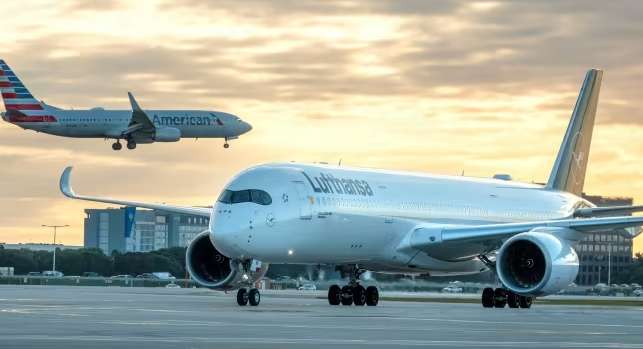Reply To:
Name - Reply Comment

By Nishel Fernando
With no credible solution in sight to resolve the jet fuel shortage and the fund repatriation issues faced by the country’s aviation industry, several airlines are contemplating on suspending their operations to Sri Lanka threatening tourism industry’s recovery, which depends on air connectivity.
The Cabinet of Ministers last month approved a joint proposal to allow the importation, supply and sale of Jet A-1 aviation fuel by bunker holders registered with the Sri Lanka Ports Authority (SLPA) in order to sustain aviation services after Ceylon Petroleum Corporation (CPC), which holds the fuel supply monopoly, failed to import the required jet fuel due to the foreign exchange crisis.
However, bunker fuel license holders are yet to act on the proposal due to several issues, a leading bunker fuel licence holder told Mirror Business. He said jet fuel (jet A1) trade involves a different supply chain, which requires finding new suppliers, who are willing to provide jet fuel on a minimum 30-day credit basis.
“It’s very difficult. One solution is that four or more bunker fuel license holders should form a consortium and move ahead with imports. In addition, they also need to secure a line of credit from suppliers for a minimum 30-day period. So, they can refuel aircraft, collect payments in US$ and pay up the suppliers. Otherwise, I don’t believe that anyone is in a position to make upfront payments in US$,” he elaborated.
However, he suggested that the government should instead focus on bringing another player into the jet fuel trade or a third player into overall fuel business by setting up a mechanism, which would ensure an uninterrupted supply of jet fuel to aircraft.
BIA officials said currently there are no moves to bring in jet fuel either via CPC or any other alternative method.
“There are potential mechanisms and models, but nothing has been done yet. Airlines are diverting their flights to other airports. As of now, some airlines have already pulled out and some airlines are talking about pulling out. Once they pull out, it would be quite hard to get them back,” a BIA official said.
The situation has been exacerbated with local airline representatives failing to remit about US$ 200 million worth funds collected via ticket sales owed to their principles through banking channels over the past 6-7 months. As a result, Sri Lanka and Pakistan have been moved to IATA’s ‘blocked funds’ list from the ‘watchlist’ recently.
“There is no mechanism to remit these funds. So, obviously, airlines are increasing airfares in order to mitigate foreign exchange losses. Airfares have doubled compared to 2-3 months ago, it’s a direct result of these issues, “a local airline representative said.
According to industry officials, airlines have cut seat capacity to Sri Lanka by 53 percent over the past couple of months.
“The usual legacy carriers continue to operate, but with less frequencies. However, it’s mostly SriLankan Airlines that makes tech stops in South Indian airports incurring additional costs. Most other carriers fly to Colombo with a full tank and go back. This limits the payload of each flight, which means they can’t carry intended passenger and cargo capacities. Even for a narrow-body aircraft coming from northern India, it needs to be refueled here” he noted.
According to Aviation Worldwide Limited’s airline frequency and capacity trend statistics report, air seat capacity to Sri Lanka declined by 27.6 percent year-on-year in both June and July to-date.